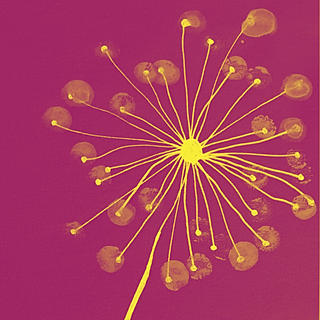Æthelflaed
- elluminations
- May 8, 2018
- 3 min read
Gloucester is celebrating the life of Æthelflaed next month and I'm excited that my painting will feature. I was originally asked by my friend George to create an Icon style painting for his Spaces project. The painting of Æthelflaed began to take shape in my mind. I came across an image of her depicted in a stained glass window in Worcester Cathedral and used this for inspiration. I discovered that her name means ‘Noble Beauty’, and she ruled from 911 as Lady of Mercia. A female ruler coming to power at that time is described by the historian Ian Walker as "one of the most unique events in early medieval history". A couple of centuries after her death, William of Malmesbury described Æthelflaed as "the delight of his [Edward’s] subjects, the dread of his enemies, a woman of enlarged soul". JPDL’s contemporary take on her resonated too: “A Founding Mother on a chessboard of Kings.”
To get the proportions right for my painting I needed someone to pose as Æthelflaed for me. I asked my sister in law, Martha, who has been my muse in previous artworks. To her credit she wasn’t thrown by my request that she pose as a 10th century Anglo-Saxon Queen and promptly arrived at my house with a bag of potential costumes and props! I took some photos and began to sketch out my design.
It started with darkness, black gesso splashed onto the blank canvas. I plotted some dots in white pencil to guide me, the canvas now looked like its own private constellation.

The negative image began to appear, white marks on the dark background. Æthelflaed stepping out through history.

She is framed in an archway, inspired by St. Oswald’s Priory – her Priory. The rolling hills behind her are made from maps, both of how the country and Gloucester would have looked in her time and how it looks today - the ‘Long Now’. Above the archway are extracts from her Father, Alfred the Great’s, will. The small design at the top of the arch and the large halo behind her are inspired by 10th century jewellery.
Her elongated features echo the ‘icon’ style. She is holding a sword in her left hand, indicating her triumphs in battle. Her right hand is making the shape of a ‘Christogram’ – the original sign of the cross. The fingers form the Greek letters ICXC, an abbreviation of Christ. This sign can be seen in renaissance art and is still used today by priests in the Eastern Orthodox church as a gesture of blessing. I read that this gesture is also seen in Hindu and Buddhist traditions as a symbol of healing. At the bottom of the canvas, the word ‘Spaces’ is picked out in Anglo-Saxon runes.
And stretching the whole way around the edging of the canvas are the words taken from Spaces collaborators (Jenny Barton and JPDL) and historians:
‘The very stones cry out:
Sing me the song again, while the stones breathe out around me,
These words were written for a Founding Mother,
Alfred’s first born daughter took to the path that was plotted before her,
Lady of Mercia, Queen before Queens, a Founding Mother on a chessboard of Kings,
Æthelflæd, a noble beauty
The delight of her subjects,
And the dread of her enemies,
A woman of enlarged soul,
A thousand years pass and millennia flows and she’s still remembered in lyrics and prose,
Her remains rest in Gloucester, and the Priory she built,
Sing me the song again, while the stones breathe out around me.’









Comments